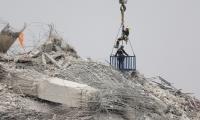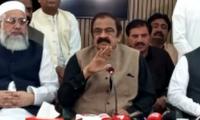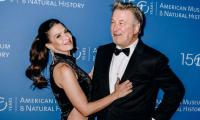WASHINGTON: The United States is making plans to counter the growing possibility of a joint Chinese, Russian and North Korean nuclear strike, according to a classified Pentagon document on Wednesday.
In March, US President Joe Biden secretly approved a significant change to America’s nuclear defence plan, The New York Times reported.
For the first time, the move has focused the US “deterrence strategy” on China’s rapid expansion of its nuclear arsenal. It also aims to address the threat of coordination between Beijing, Moscow and Pyongyang, according to the US newspaper.
The redirection reflects a deeper understanding of Chinese president Xi Jinping’s nuclear weapons ambitions as well as a recent deepening of strategic military and political partnerships between China, Russia and North Korea.
Last October, a Pentagon report revealed that China’s nuclear weapons stock had more than doubled in the previous three years, in what officials described as a “major expansion of their nuclear forces”.
The Pentagon’s China Military Power Report estimated that, as of May last year, China had around 500 operational nuclear warheads, which would increase to 1,000 by 2030 and 1,500 by 2035, roughly matching the numbers currently deployed by the US and Russia.
An official at the time said this put China on track to exceed previous projections.
Defence experts also warned that the US should not underestimate President Xi’s strategic move towards acquiring greater nuclear might.
“As US-China relations deteriorate and China embarks on a large-scale build-up of its nuclear forces, the security risks are rising,” Tong Zhao, a senior fellow at the Carnegie China Research Centre, wrote in a paper on China’s changing nuclear policy last month.
According to The New York Times, the White House did not publicly announce its revised strategy, named Nuclear Employment Guidance.
The highly classified document, updated every four years, only exists on paper in the hands of a small cohort of national security officials and Pentagon commanders. There are no electronic versions.
However, the pivot towards China was alluded to in carefully calibrated public comments by two senior administration officials, ahead of a more detailed, unclassified notification of Congress.
Meanwhile, China is seriously concerned about a report that said the United Stated approved a nuclear strategic plan to focus on China’s rapid expansion in its nuclear arsenal, the Chinese foreign ministry said on Wednesday.
“The US is peddling the China nuclear threat narrative, finding excuses to seek strategic advantage,” a Chinese foreign ministry spokesperson said.
Monsoon clouds loom over the overflowing river Yamuna, in New Delhi, India, July 15, 2023. — Reuters PARIS: Can...
Members of the Texas National Guard stand guard near the border wall between Mexico and the United States, as seen...
Iwao Hakamada, 88, leaves home for his daily stroll in Hamamatsu, central Japan September 26, 2024, 2024, in this...
Spokesperson for Matsamo CPA Bernard Shabangu poses for a photograph near their offices in the Kaalrug area south-east...
A Saudi tailor showing an Arabian robe made by him. — AFP/File Hofuf : Saudi tailor Habib Mohammed´s shop once...







